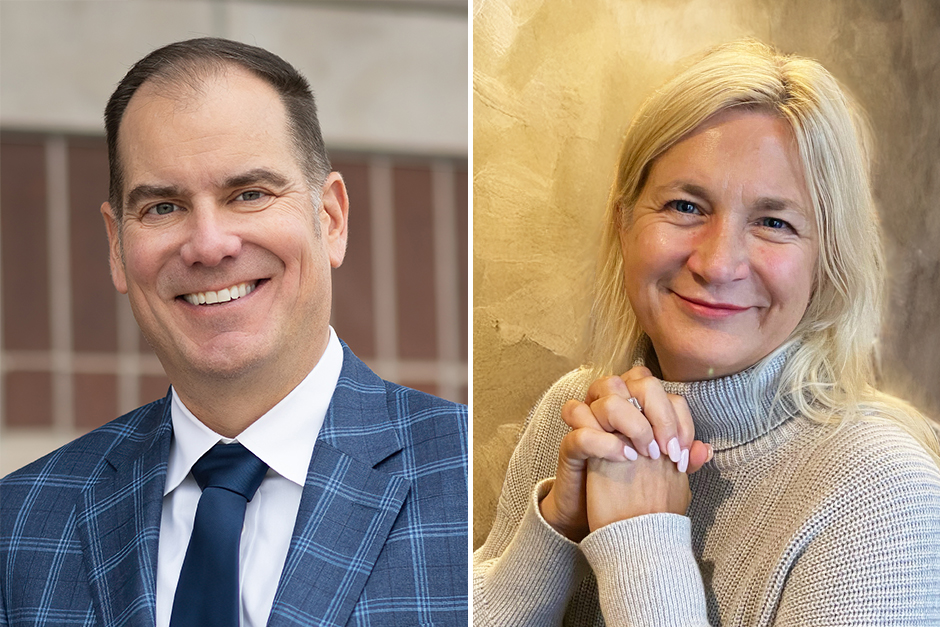Engineering course helps students see beyond the classroom
What started off as a basic class assignment has helped a group of Cornell College students more clearly see how their studies could have an impact on others.

Amanda Bentz ’18, Gio Rivera ’17, and James Cannon, who is a dual-enrolled high school student from Lisbon High School, worked together on a final project for their Introduction to Engineering Design class.
“I really tell them they can do anything they want,” said engineering professor Brian Johns. “If they want to do a project that’s more of the sustainability side of things, they can do that. If they want to do more of a computer-type project they can do that. It’s really about them—what do they want to design? I find that if students are excited about their own project, I get a lot better results in the end.”
After discussing and debating the possibilities, the trio came up with an idea to design and produce replacement eyeglasses frames.
“We wanted to solve a problem that our friends had—people who have glasses break their frames a lot,” Bentz said. “So, we decided we would make something that could replace a broken set of frames until they could go to the doctor and get a new set of frames.”
What makes this project unique is that the replacement frames are created using a computer aided design (CAD) program and a 3-D printer.
“We modeled it on the program, which is how you get the files for printing,” Bentz said. “Basically after that, we used software that would slice it into layers so that the 3-D printer could read it and print it. Then, we took it over to the Academic Technology Studio in the library, plugged the files into our MakerBot and a couple hours later we had a pair of glasses. It was great.”
They had to think through each of the pieces on the replacement frames from the tiny screws to the nose piece. The idea is that the lenses of any glasses could fit into the replacement frames and that the frames would fit just about anybody.
“We went through a process of extreme rapid prototyping to figure out how to best put a pair of glasses together to fit on a person’s face,” Cannon said.
Even though the class is over, the project is not. Their professor told them this project could have a broader application with more uses, which made them think about the future.
“We are exploring the patent law and figuring out how to patent it, and hopefully we can get it out there to some nonprofits for Third World countries and low-income families to help people,” Cannon said.
The students said it would be easy for anyone to have the design on a thumb drive and print off the frames on a 3-D printer at a cost of $5 or less.
This group of Cornell College students is proving there’s no project too small to make a big difference.
“In a week I have made something that can be helpful to people, and that’s really cool,” Cannon said.
For more information, please contact Cornell College Public Information Director Jill Hawk at 319.895.4232 or jhawk@cornellcollege.edu.
KCRG-TV9 spent time with the students to share their message.
Tags: academics, engineering



